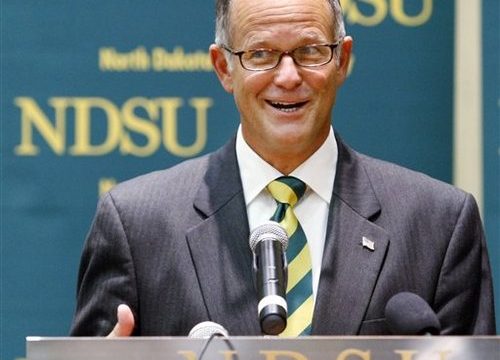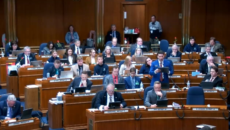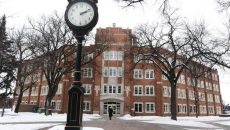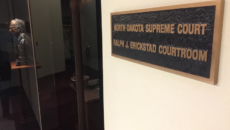Emails Paint A Picture Of University Presidents Who Don't Want To Be Governed

This is a fascinating report from the Grand Forks Herald’s Ryan Johnson based on thousands of emails from North Dakota’s university presidents revealing what they’ve failed to say publicly about embattled Chancellor Hamid Shirvani.
It’s been clear from the get-go that there has been a coordinated effort to push Shirvani out, with the university presidents leaning on their toadies in the legislature to move the ball up the field, and this report provides more evidence to support that conclusion.
Case in point, NDSU President Dean Bresciani saying in an email that he and his fellow presidents plan on leaving the dirty work of pushing Shirvani out to others:
In early January, Bresciani wrote in an email to NDSU Provost Bruce Rafert that the upcoming Jan. 14 University System presentation to legislators in Bismarck “may get ugly,” but he planned to stay out of the discussion.
“Although many campus leaders will probably be there, the approach we’re taking is to purposefully NOT be there so that I/we can’t be asked what we think about the Chancellor’s plans,” he wrote in the email.
Remember, these are the same university presidents who are accusing Shirvani of causing a breakdown in communications actively avoiding questions from legislators. Why would they do that? In a word, politics. Bresciani, et. al., didn’t want to fix problems. They wanted to hang Shirvani out to dry.
And then there’s this quip from Bresiciani, suggesting that they ought to hire movers for Shirvani after a student group cast a vote of no confidence against him:
On Feb. 23, executive assistant Barb Pedersen forwarded Bresciani a link to The Forum’s online report of a North Dakota Student Association vote of “no confidence” in Shirvani and to support Grindberg’s buyout plan, simply sending the message, “Whoa…”
Bresciani replied minutes later, “I’ll say…and it apparently wasn’t even close.”
Pederson asks, “What’s the next step?” – prompting an unclear response from Bresciani.
“Start getting bids from movers?” Bresciani wrote.
And we’re supposed to believe that Bresciani and his fellow presidents weren’t orchestrating Shirvani’s removal.
Cutting through all the spin – all the finger-pointing, politics and recriminations – what we see is a group of pampered bureaucrats who got territorial when their control over their fiefdoms was challenged by a strong leader seeking a unified system. Shirvani presented a vision of a unified system to the State Board of Higher Education. The SBHE hired Shirvani based on that vision, but when Shirvani tried to implement it the university presidents decided to use their political influence to try and push him out instead.
Which happened to a previous chancellor – Robert Potts – when he tried to be something more than a rubber stamp for the university presidents.
Somehow our university has become so bloated, so decrepit and decadent, that mediocrity and overspending is the norm and a person hoping to raise the bar for the universities and create better value for both students and taxpayers is seen as the troublemaker.
It really is shocking to observe.
Interestingly enough, the university presidents may well have overplayed their hands. Their battle with Shirvani may be a moot issue at this point. North Dakota voters will get to decide whether to change the governance structure of the university system, doing away with the SBHE and the chancellor and giving our elected officials more involvement and control.
It’s badly needed reform that the universities and their allies in the media will fight, but what’s amazing is that the civil war they picked with Shirvani no doubt greased the skids for its passage in the legislature and may well have convinced the public it’s needed too.
One thing is certain. If Chancellor Shirvani accomplishing nothing else in North Dakota other than stirring the pot to the point where this sort of reform is passed – even if it eliminates his own job – his time here will have been worth it.







